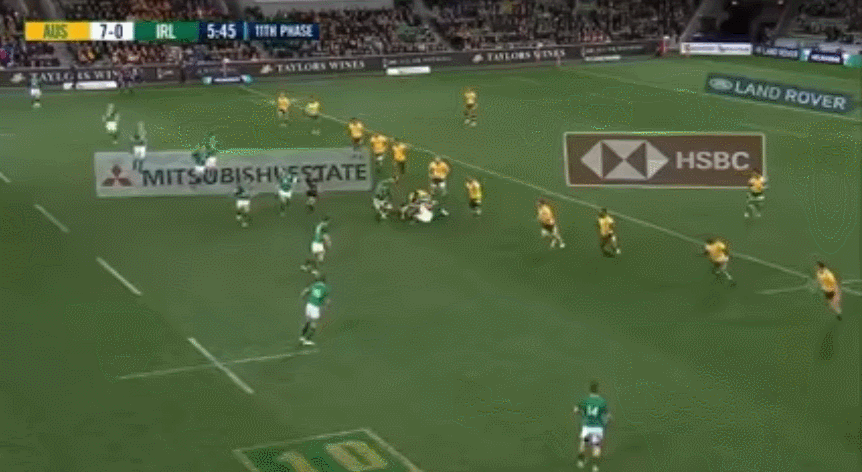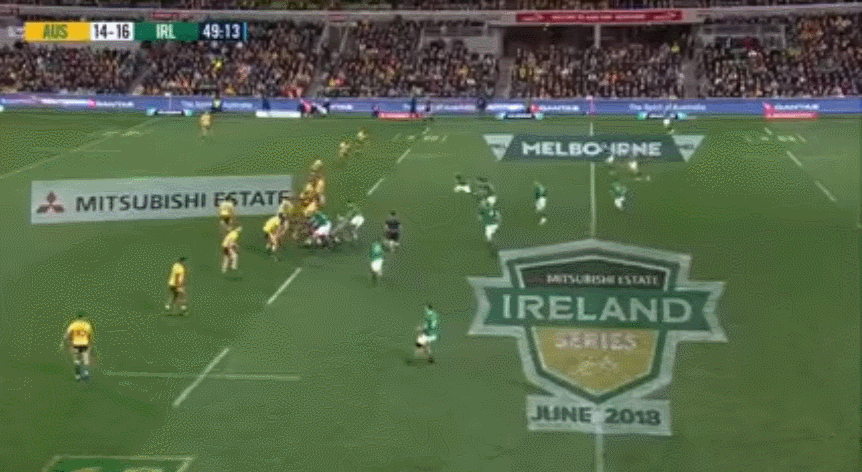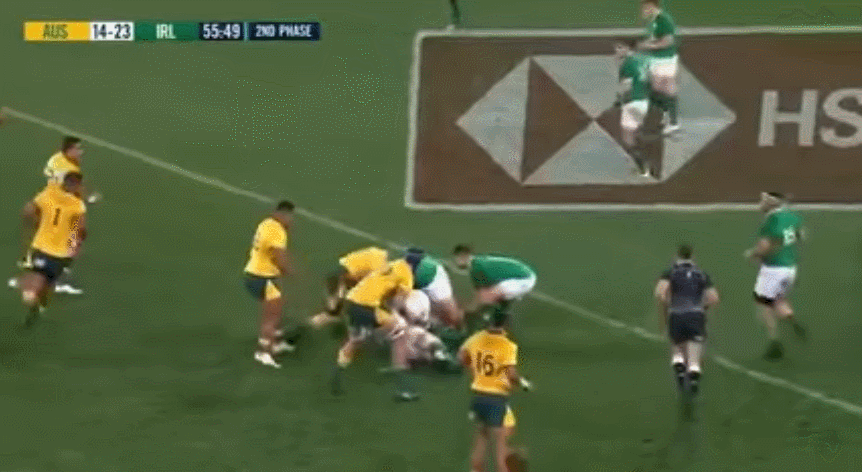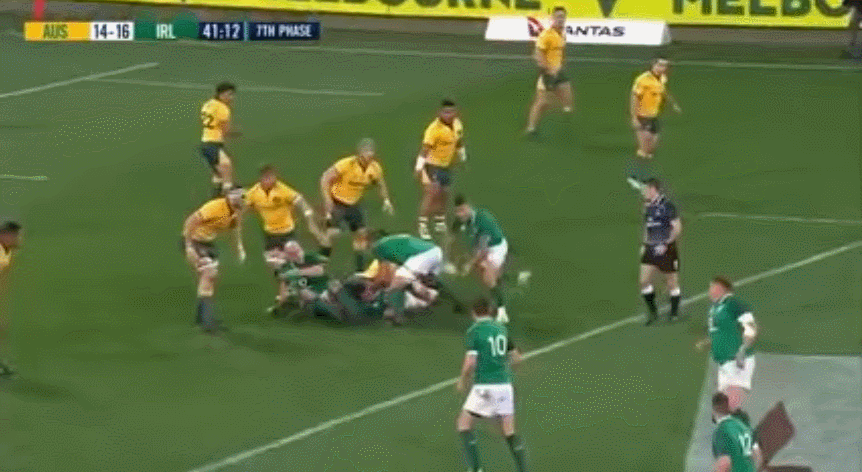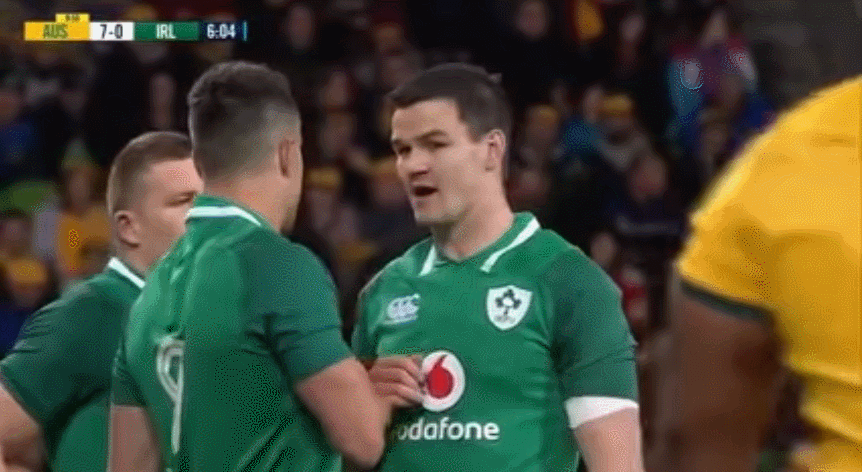It’s been evident that Johnny Sexton has been world-class for sometime now.
He’s started Lions Tests. Won Pro14, Champions Cup, Six Nations and Grand Slam titles. Kicked 45m match-winning drop goals and that’s all just in the last year.
The Ireland fly-half is one of the world’s best rugby players and it showed last weekend in Ireland’s 26-21 win over the Wallabies in Melbourne.
Sexton came into the starting side for Munster bound fly-half Joey Carbery, and while Carbery performed admirably in Brisbane given the fact that he had just three starts at fly-half this season prior to the opening Test, Sexton was on a different level to his protégé at AAMI Park.
The Leinster playmaker’s performance in Ireland’s series tying win had all the hallmarks of a classic Johnny Sexton game: he kicked well, he ran the ball when he needed, he played flat and close to the line, he used inside runners to counteract an aggressive Australian defence, he tackled aggressively and he controlled the game.
He did everything that you want an international fly-half to do for you and he put his team back in a series where they are more than capable of winning. Here’s how he did it:
One of the first things you noticed about Sexton’s play last weekend was his ability to counteract Australia’s linespeed.
The Wallabies did an excellent job in the first Test in Brisbane at getting off the line and stopping Irish attacks before they ever had a chance to start.
But Sexton did a great job in the second Test in Melbourne at keeping the Australian defence honest by using his inside runners effectively.
Sexton threw a number of inside balls in the first-half on Saturday, some as part of set plays, others as a reaction to a pressing Wallabies defence.
None of the inside balls he threw in the first-half led to any real gains for the Irish attack but he kept them as part of his arsenal and kept the Australian defence guessing as a result.
Sexton made 43 passes against the Wallabies last weekend, and while many of his passes were to forward runners or the other backs outside of him, his inside ball to Keith Earls in the second-half ultimately led to the field position that saw Tadhg Furlong score Ireland’s second try of the game a few minutes later.
In the footage below we can see that Sexton receives the ball flat from Conor Murray and has runners both short and behind him while Earls trails on his inside.
The pass from the base of the ruck is crisp from Murray and Sexton notices that Wallabies captain Michael Hooper shoots out of the defensive line before sending Earls straight through the gap with a brilliantly timed inside ball.
Notice how Sexton engages the defence until the final moment before hitting a striding Earls at the perfect moment.
Holding the defence’s attention is a big part of Sexton’s strength as an out-half and it’s something he does as well as any fly-half in world rugby.
Earlier this season former Wales fly-half Jonathan Davies offered a solution to counteract Sexton’s ability to take the ball to the line with Davies claiming that you have to hit him as often as possible in defence and that you can get at him as a defender because he plays so flat.
“Every time Sexton gets the ball put him on the deck. Even if he’s passed and it’s a little bit late put him on the deck all the time,” Davies told the BBC.
“He’s the key and the man who orchestrates everything. He runs the show, gets the ball in his hands on so many occasions. Once he passes you don’t have to be really late because he does play flat and takes the hits.
“Once he takes it, if you’ve a chance to have a shot on him, put a shot on him put him on the floor and you stay on top of him for a couple of seconds. And when you’ve got the ball run over him and target him because he likes a tackle.”
Sexton does play flat but getting at him is easier said than done.
He plays close to the line but the timing and delivery of his passes are so quick that it can be hard to get at him without running the risk of a blatant late hit.
Admittedly, Sexton gets a bit of assistance here from Robbie Henshaw who barrels Kurtley Beale over but the focus here is that his first few steps in possession are always accelerating forward before he makes a decision on whether he wants to pass wide, pass short or take the contact.
Of course, decoy runners are only effective when the defence knows that there’s an actual chance that the decoy runner will actually receive the ball.
Sexton will hit the short runner quite often and he does a great job at disguising which option he’s going to take before releasing the pass.
Notice below that he stays square until the final moment, but that when he does decide to commit to the pass, he looks at Robbie Henshaw while playing the ball to Cian Healy.
It’s ultimately the right decision as we can see Kurtley Beale jam in on Henshaw just like he smashed Murray the previous week.
The Wallabies know that Ireland play a lot of their ball through Sexton and Murray and therefore they’re quite willing to shoot in a lot of the time to shut down the play.
They jammed into great effect in the first Test in Brisbane but Sexton for the most part had the upper hand in Melbourne.
A lot of the great things that Sexton does with ball in hand comes with his ability to read the defence and make the right decision at the line.
However, even in plays where he’s not involved directly, he can still have a massive influence on the direction the attack will take.
The 32-year-old has hinted at a career in coaching after his playing days are over and it’s an option he should consider.
“It’s something I would like to go into eventually but my first thought is playing for as long as I can. I love getting up to go to training.”
Sexton may get a coaching break further down the line but here on Andrew Conway’s first try we can see that he’s already starting his apprenticeship.
The play actually begins before the play actually begins with Sexton dragging both Murray and Conway aside to tell what we can only assume is what Ireland will run from the line-out.
Hooker Niall Scannell finds James Ryan with the throw to the back and the second-row takes the ball in before steering the Irish maul over towards the posts.
Sexton and Conway then start from directly behind the maul before quickly running wide and squaring up to the defence. Murray eventually rips the ball out from the back of the maul and all three begin to run hard straight lines towards the Australian line.
Murray dummies the ball with a quick stutter before finding Conway with a beautiful skip pass to score.
Sexton immediately throws his hands in the air like a coach that has just seen his plan executed before his eyes, basically, because, he is a coach that has just seen his plan executed before his eyes.
There were many elements of Sexton’s play that impressed on Saturday. He made a great one-on-one tackle on Beale. When he kicked for the corner he often found touch and when he kicked to the skies he let the ball hang long enough in the air that his outside backs were able to contest the kick.
But so much of his brilliance is rooted in his decision making, his ability to take the ball to the line while staying square and his timing and execution.
Sexton has indicated that he would be open to the idea of playing until 40 and that he’s taken inspiration from New England Patriots quarterback Tom Brady, who was crowned the NFL’s MVP last season at the age of 40.
Brady just completed his 18th season in the league and his ability to read defences and make adjustments at the line of scrimmage is almost unparalleled in the NFL.
Sexton may not play until he’s 40 like Brady but he could conceivably continue to develop a greater feel for the game much like Brady has in the second-half of his career.
His body may not last another eight years so let’s enjoy him while he’s here because he’s been a joy to watch.

